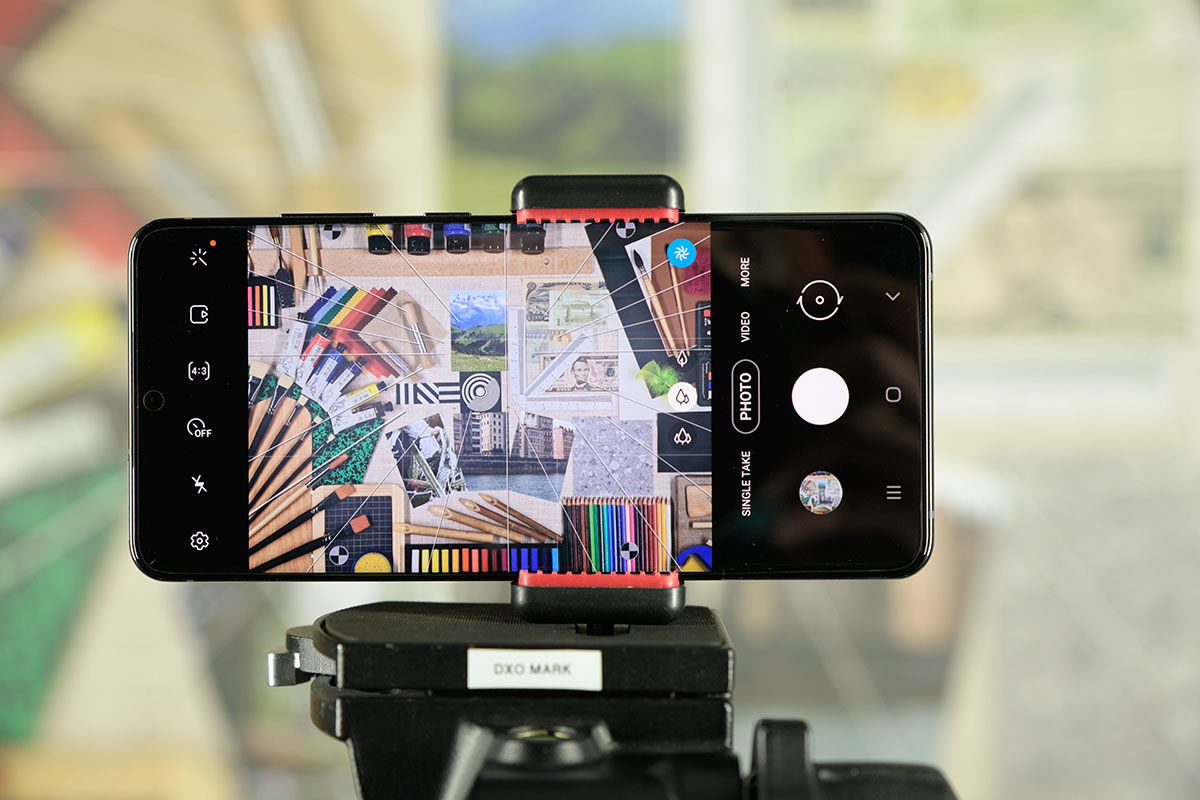The Samsung Galaxy S20 Ultra is the South Korean electronics giant’s latest flagship smartphone. It comes with some eye-catching basic specs: there’s a huge 6.9-inch AMOLED display, a high-end Exynos 990 chipset (Snapdragon 865 in the USA), and a massive 5000mAh capacity battery to keep you shooting all day.
The S20 Ultra packs more photographic possibilities compared to its S20 and S20 Plus sister models, too, thanks to a quad-camera configuration that features an additional time-of-flight (ToF) depth sensor, a higher-resolution primary camera, and a longer focal length tele-camera.
The S20 Ultra’s primary camera offers an updated version of the 1/1.33-inch 108MP-resolution sensor that we saw on the Xiaomi Mi 10 Pro. The S20 Ultra now uses 3×3 pixel binning (instead of the 2×2 of the Xiaomi), combining 9 pixels into one “super-pixel” that results in a bigger effective pixel size of 2.4µm to help improve image quality in the 12MP image output. The primary sensor is coupled to a standard wide-angle 26mm-equivalent lens with f/1.8-aperture.
For the tele-camera, Samsung has implemented a periscope-style lens similar to that in Huawei’s and Honor’s flagship phones. The S20 Ultra’s 103mm f/3.5-aperture lens provides a native 4x optical zoom. The 10x hybrid combines image information from the 48MP tele-camera and from the high-resolution 108MP main camera. Both the primary and tele-cameras also feature PDAF autofocus and optical image stabilization (OIS).
Samsung has also made some changes to the ultra-wide camera on the S20 Ultra compared to previous generations, although they’re slightly less dramatic than the primary sensor resolution and tele-camera upgrades. The new model now features a 13mm f/2.2-aperture lens and 12MP sensor, compared to the wider 12mm f/2.2 optic and higher-resolution 16MP sensor on the S10 Plus. The lower resolution ensures a bigger pixel size of 1.4µm on the latest model, and the 12MP resolution remains perfectly adequate for the majority of smartphone shooters.
Finally, the S20 Ultra’s rear quad-camera features an additional depth sensor. Activated in Portrait mode, the 0.3MP depth sensor uses ToF 3D technology to help improve subject segmentation when applying a bokeh effect.
The newly-designed sensor on the primary camera now enables 8K video capture on the S20 Ultra at 24 frames per second. While 24fps is the only frame rate available for 8K video, drop to 4K and you can capture videos at 30fps or 60fps. Frame rates of up to 960fps are available at 720p resolution. Video features also include Samsung’s HDR10+ video processing that promises improved dynamic range, color, and contrast. For stabilization, both gyroscope-enabled electronic image stabilization (EIS) and optical image stabilization (OIS) are activated in all of the S20 Ultra’s video formats.
With that impressive array of smartphone camera tech, it’s fair to say that this is the most advanced Samsung smartphone for photography to date. Let’s find out how it performed in our DXOMARK Camera tests.
Key camera specifications:
- Primary: 108MP 1/1.33″ sensor, 26mm-equivalent f/1.8-aperture lens with PDAF autofocus and OIS
- Telephoto: 48MP 1/2.0″ sensor, 103mm-equivalent f/3.5-aperture periscope lens with PDAF autofocus
- Ultra-wide: 12MP sensor, 13mm-equivalent f/2.2-aperture lens
- Depth: 0.3MP ToF 3D sensor with f/1.0-aperture lens
- LED flash
- Video: 8K 4320p/24fps, 4K 2160p/60fps (2160p/30fps tested)
- Exynos 990 chipset






